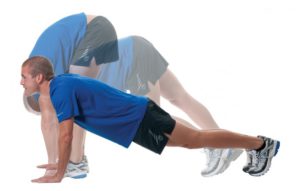Part 2 – Starting out safely: Reducing the risks of running injuries
As a beginner to running, once you’re kitted out and have been checked over you’re ready to go. But before you put tread to pavement, it’s important that you look after your body to reduce the risk of aches, pains and injuries. We’ve put together the PremierPhysio guide to starting out safely.

1. Warm-up: Warming up gets your body ready for exercise, and can help to prevent injury by slowly increasing blood flow to your muscles. It can also reduce the muscle soreness you feel after exercise. Try the following exercises to raise your heart-rate, ready for the workout ahead:
– A brisk five-minute walk…
– …step up and down some stairs…
– …or march on the spot
2. Taking everything in your stride: When you’re on the move, thinking about how your body is moving and what it is doing, can help you to run more efficiently and keep you going for longer:
– Lift your head and look forwards. Try picturing a spot about 30-40 metres in front of you that you need to run to. Avoid looking at your feet.
– Relax. Release any tension in your neck, shoulders and jaw. Shake your wrists to loosen your hands and fingers if you feel like your forming a grip.
– Avoid hunching over as it may be harder to keep your breath with this posture. It’s generally believed that adopting an upright posture is the best starting position.
– Keep your hips facing forward and avoid sticking your bottom out.
– Try to land with a slight bend in the knee to help cushion the impact. Your knees should push forwards not upwards.
– Aim to strike the ground with the midfoot, avoiding landing on your heel or toe. You may also find you’re more comfortable running with quicker, shorter steps too.
– Breathe deeply either through your mouth or nose. Aim for a breath every 2-3 strides.
3. Cooling down: Slowing your pace and end your run with a five-minute walk. This will bring your heart rate back down before you go on to do your stretches.
4. Stretches: A general all over stretch is recommended after a run to stretch all the major muscle groups such as quads, hamstrings, adductors, gluts, calves, back, neck and shoulders.
Make sure to follow the PremierPhysio blog for more tips and advice on running for beginners.




